- Nissan Motor Corporation
- Nissan
- Formula E
- Nissan Formula E
- ABB FIA Formula E World Championship
- GEN3 Evo
- Norman Nato
- Oliver Rowland
- Tommaso Volpe
- Oliver Rowland
- Electromin
- Petromin Corporation
- Saudi Arabia
- Kalyana Sivangnanam
- Coral
- Daniele Sileri
- Coral Eyewear
- George Bailey
Nissan Formula E Unveils Season 11 Livery
- By MT Bureau
- October 18, 2024
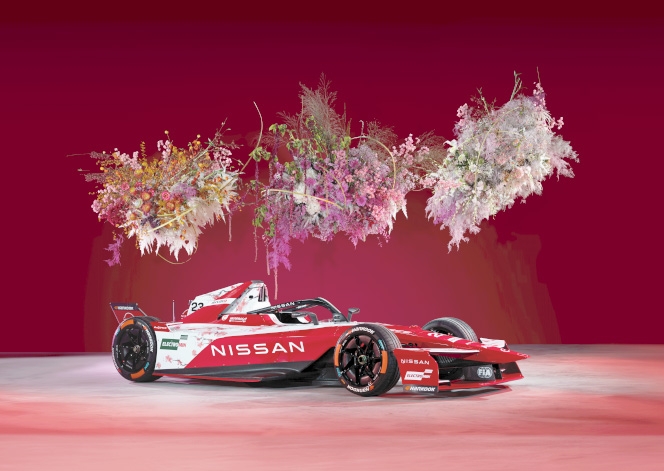
Nissan Formula E Team has unveiled its updated livery for the 2024/25 ABB FIA Formula E World Championship, with the team being prepared for the first campaign under the new GEN3 Evo regulations.
For the upcoming season, Nissan Formula E Team states it has opted to continue with its cherry blossom livery, which has been a fan-favourite ever since it debuted at the start of Season 9.
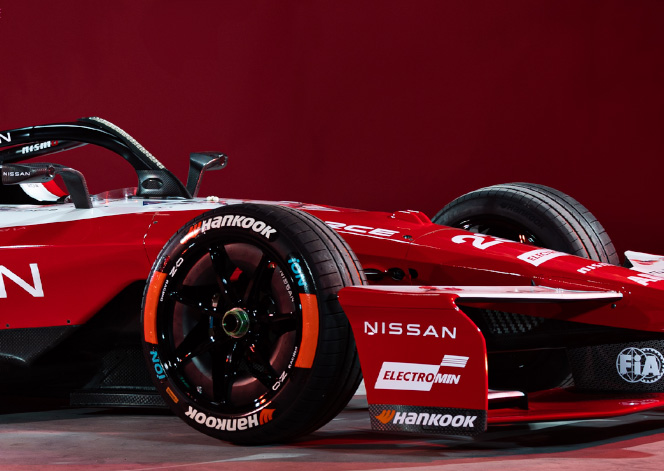
The pattern is meaningful for the outfit, both as a hint to its Japanese DNA and new beginnings, as well as now being part of Nissan’s identity in Formula E. The Japanese team will be looking to build on a strong Season 10, which saw it finish fourth in the Teams’ and Drivers’ Championship, as well as third in the newly-established Manufacturers’ Championship.
Nissan Formula E Team has opted to refresh its driver line-up, with the experienced Norman Nato returning after a season away. Together with Oliver Rowland, who took two victories and five further podiums in an excellent Season 10, the squad now boasts two Formula E race winners. Both drivers possess the knowledge of how to get the most out of their machinery and have a proven track record of helping teams develop their cars. Nato will continue to sport the #17 on his Nissan e-4ORCE 05, while Rowland switches to Nissan’s traditional #23.
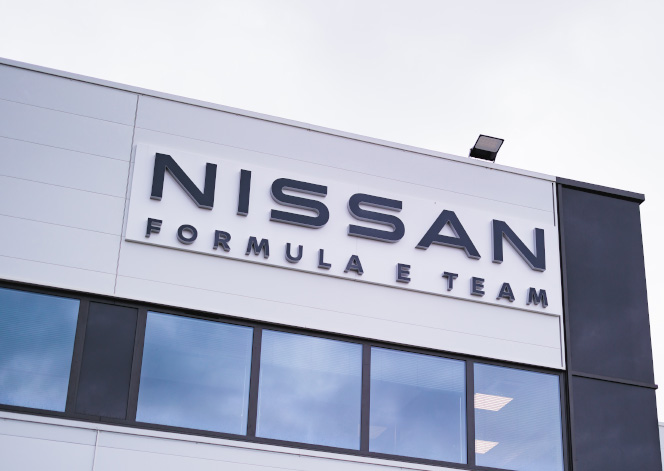
The new factory is also fully operational ahead of the 2024/25 campaign. The Nissan Formula E Team dedicated facility stretches over 2,600 square meters and features a workshop area, simulator, engineering and management offices, as well as display, meeting and multipurpose areas. Located south of Paris, the headquarters is based close to other Nissan sites and its Alliance partners, ensuring synergies and access to talent, equipment and facilities available within Nissan and the group.
Rowland and Nato will be on track for the first time in an official capacity as team mates at pre-season testing on 4-7 November in Valencia, while Season 11 kicks off on December 7 at the Sao Paulo E-Prix.
Tommaso Volpe, MD and team principal, Nissan Formula E Team said: “We’re excited for the new season and have been working hard, getting to grips with the GEN3 Evo car. Everything has been running smoothly so far and we’re looking forward to getting out on track in Valencia. Our new workshop is fully operational now, which is making a huge difference - we’ve been able to take full advantage of the facilities, allowing us to maximise the potential of the team. In terms of drivers, Norman has settled in very quickly, he knew most of the crew already so that made things easier than normal. Together with Oli, we’re confident that we have a strong line-up ready to fight for wins and podiums throughout the upcoming campaign. On top of that, we’ve got great companies supporting us, with Electromin extending and increasing its collaboration with the team to become our main partner, alongside existing relationships with Coral and Coral Eyewear, who we are delighted to be working with. We’re fully focused on improving at every step and continuing where we left off a few months ago, as we aim to challenge at the top in Season 11.”
Oliver Rowland: “It’s been good to re-charge after a busy year, but I’ve still been preparing for Season 11, making sure I’m in good shape both physically and mentally. It’s great to have the new workshop fully in action, I’ve been really impressed by the facilities. The location is ideal and it sets a high bar for ourselves, showing our ambition to continue improving and fighting at the front. There are a few areas to get on top of with the GEN3 Evo, including the all-wheel drive technology, but we’ll look to iron everything out and be ready to take up the fight from the first race.”
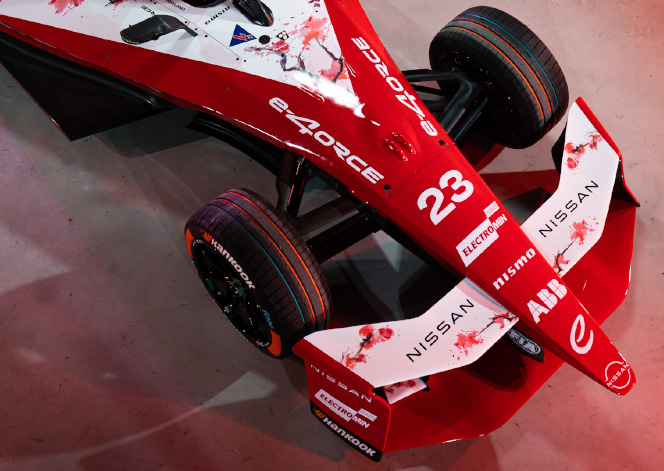
Norman Nato: “I’m delighted to be back with team and I already feel comfortable straight away with the car, simulator and staff. The biggest change has been the excellent new workshop, allowing us to prepare and debrief from races in amazing conditions, with the highest level equipment available to us. The updated livery is really cool, keeping our Japanese identity and the fans love it, making us so recognisable on- track. I can’t wait to start this GEN3 Evo era in Valencia testing, before heading out to Brazil for the season opener!”
The Japanese team acknowledged the role of its partners including, Electromin which increased its involvement with the team, becoming innovation partner. A leading mobility solutions provider in the Middle East, Electromin is a subsidiary of Petromin Corporation, one of Nissan’s official importers in Saudi Arabia.
Kalyana Sivagnanam, Group CEO, Petromin Corporation said: “We are immensely proud to enter this strategic partnership with Nissan Formula E Team as its official global sponsor for the next four years, with Electromin leading the charge in the first year. As the pioneers of electric mobility in Saudi Arabia through Electromin, we see this partnership as a key step in accelerating the adoption of EV technology across the region.”
Coral remains on board as the squad’s sustainability partner, specialising in offsetting carbon emissions. Coral helps the team assess, monitor and reduce its carbon footprint.
Daniele Sileri, Founder and Head of Strategy, Coral said: "Nissan Formula E Team has been the perfect launch partner for Coral. We are delighted to show the tangible results of our partnership in a matter of weeks, whereby we can help the team offset its carbon footprint."
Coral Eyewear also continues its relationship with the team for a second season. The sustainable fashion start-up supplies the outfit with its distinctive product range, which are crafted using recycled plastic and plant-based materials.
George Bailey, Co- Founder, Coral Eyewear said: "We're immensely proud to be partnering with Nissan Formula E Team. It's exciting to see developments in electric technology moving from the track into road vehicles, and the team are clearly making efforts to choose sustainable options.”
MapmyIndia And Zoho Announce Integration For CRM Users
- By MT Bureau
- November 26, 2025
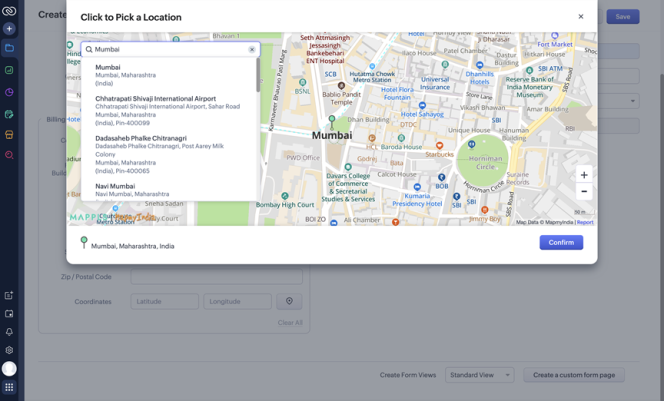
MapmyIndia Mappls, a digital mapping and geospatial technology company, and Zoho, a technology company, have announced a collaboration to integrate two MapmyIndia features directly within Zoho CRM. The features being integrated are Address Capture and Nearby Lead Finder.
The integration allows Zoho CRM users to: capture verified addresses, visualise customer locations, discover potential leads in nearby areas and optimise sales routes. These functions are powered by MapmyIndia’s mapping platform.
Rakesh Verma, Co-Founder, Managing Director & Group Chairman, MapmyIndia Mappls, said, “This partnership between MapmyIndia and Zoho is a true blue Swadeshi celebration – two Indian innovators and leaders in their respective fields - coming together to deliver cutting-edge, homegrown technology that is world-class. MapmyIndia Mappls Address Capture and Nearby Lead Finder capabilities will help Zoho CRM users across India to work smarter and sell better, while keeping all data and innovation safe within India. I am confident that this partnership will boost collaborations amongst Indian tech companies creating a sympathetic ecosystem towards the realisation of an Atmanirbhar, Viksit Bharat.”
Mani Vembu, CEO, Zoho, said, "At Zoho, we believe that true technological progress begins with self-reliance. Building deep-tech R&D from India has always been one of our foundational pursuits, driven by the immense talent and creativity that thrive in the country. Our partnership with MapmyIndia embodies this vision, uniting homegrown expertise in business software and digital mapping to deliver solutions that are powerful, privacy-focused and proudly indigenous. This integration empowers Indian businesses by combining business intelligence with spatial intelligence, giving field teams the location-aware insights they need to better serve their customers."
Toyota Kirloskar Motor Opens Experiential Museum In Bengaluru
- By MT Bureau
- November 24, 2025
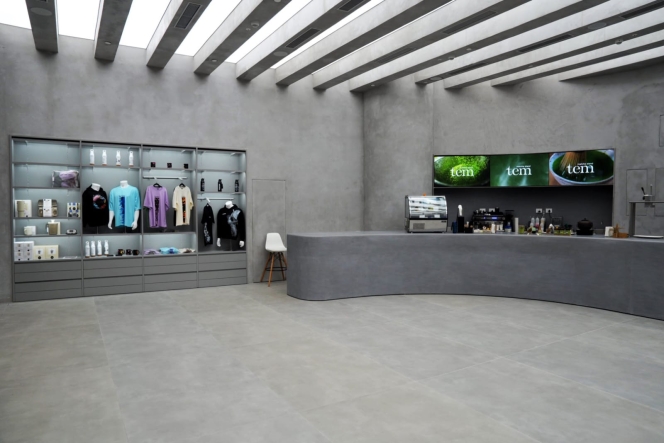
Toyota Kirloskar Motor (TKM) has unveiled the Toyota Experiential Museum (TEM) in Bengaluru, which it said is a new cultural and lifestyle hub for the company. The space combines Indian philosophy with Japanese culture and technology.
Located on the ground floor of the Phoenix Mall of Asia, TEM is spread across 8,200 sq ft and offers a five-senses experience, blending Japanese minimalism with Indian warmth through visuals, sounds, scents, textures and flavours.
Tadashi Asazuma, Deputy Managing Director, Toyota Kirloskar Motor, said, “At Toyota, our vision of creating ‘Happier Paths Together’ goes beyond mobility – it is about inspiring experiences that connect people, cultures, and emotions. With TEM, we hope to offer a truly unique experience that embodies this spirit.
In India, we found inspiration in the practice of Sadhana – the mindful pursuit of inner balance and fulfilment. TEM is where the Japanese culture and values of precision, serenity, and respect for nature beautifully align with the spirit of Sadhana, making TEM a meaningful blend of both. Designed to engage the senses and spark reflection, it brings together art, technology, and craftsmanship to inspire mindfulness, especially amongst the youth.”
The museum features minimalist interiors and distinct aesthetics designed to spark curiosity, inviting guests to explore at their own pace. The journey begins with a mirrored and rhythmic experience of the changing seasons common to Japan and India, unfolding through infinite projections of light, colour and motion. It then rises into a celebration of shared passion, featuring an audio-visual collaboration with DRUM TAO. A display includes a water curtain encircling a car draped in satin.
A design cafe offers a range of merchandise blending heritage with contemporary lifestyle, celebrating simplicity and craftsmanship.
The TEM cafe features a curated menu that blends the Japanese tradition of matcha with Indian flavours. Highlights include the India-inspired mango infusion.
- Maruti Suzuki India
- Maruti Suzuki Innovation Fund
- Ravity Software Solutions
- Sociograph Solutions
- Amlgo Labs
- Hisashi Takeuchi
- Vikas Rungta
Maruti Suzuki India Invests INR 20 Million In Ravity Software Solutions
- By MT Bureau
- November 21, 2025
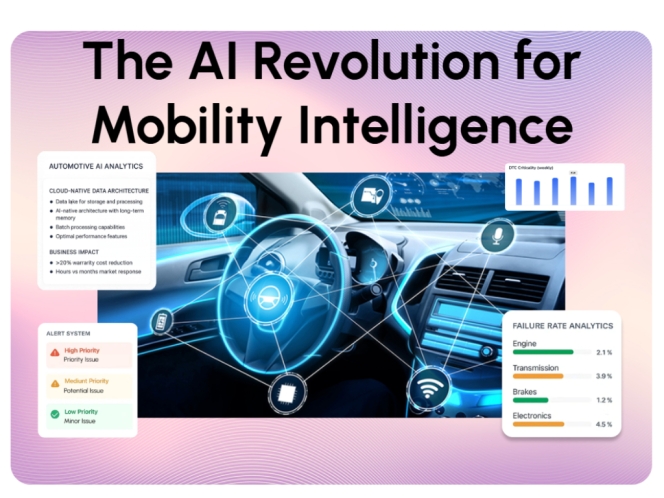
Maruti Suzuki India (Maruti Suzuki) has announced an investment of nearly INR 20 million to pick up 7.84 percent stake in Bengaluru-based mobility insights start-up Ravity Software Solutions. The start-up claimed to be a global platform for AI-driven connected mobility intelligence, which transforms vehicle data into business value.
This marks the automaker’s third such move through ‘Maruti Suzuki Innovation Fund’, which makes strategic investments in innovative and high-potential start-ups that can support Maruti Suzuki India’s operations.
The company made its first investment of INR 20 million in Sociograph Solutions in June 2022, followed by the same amount in Amlgo Labs in March 2024.
Hisashi Takeuchi, Managing Director & CEO, Maruti Suzuki India, said, “Aligning to our core value of keeping customer at the core of our business, we are focused on enhancing vehicle ownership experience. In the age of open innovation, we strive to co-create business solutions with specialized entities operating in the particular field. Startups are ideal partners as they bring agility, fresh thinking, and cutting-edge solutions, to support our goal of ensuring customer delight. Our investment in Ravity Software Solutions will enable us to elevate customer experience through data-driven insights. We have been associating with startups since 2019 under our Maruti Suzuki Innovation programs. Through this initiative, we are investing in a culture of innovation, building strategic partnerships, and unlocking new opportunities, in line with Government’s ‘Startup India’ initiative to promote entrepreneurship in the country.”
Vikas Rungta, Founder, Ravity Software Solutions, said, “It is an honour to be associated with an industry leader like Maruti Suzuki, whose name is synonymous with bringing personal mobility to millions in India as well as across the globe. An automobile major like Maruti Suzuki partnering with a startup speaks volumes about its forward-thinking mindset, humility, and openness to learn and collaborate to explore new ideas. With our excellence and expertise in AI, analytics and mobility, we are committed to upholding the trust Maruti Suzuki has placed in us. We believe that the high complementarity of our strengths: Maruti Suzuki’s scale of business and our agility and entrepreneurship, will further enhance customer experience and delight.”
LG Display Wins Two CES 2026 Innovation Awards For Automotive Display Technology
- By MT Bureau
- November 21, 2025
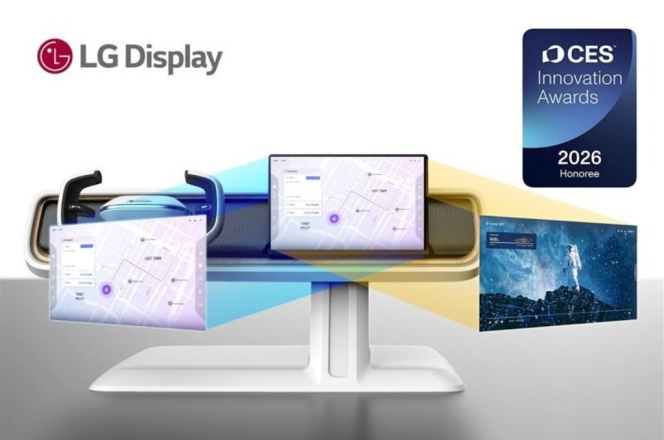
LG Display has secured two CES 2026 Innovation Awards from the Consumer Technology Association (CTA) for two automotive display innovations: Dual View OLED and Under Display Camera-infrared (UDC-IR) OLED.
Both products were honoured in the In-Vehicle Entertainment category for delivering space efficiency, superior picture quality and high standards of safety.
The Dual View OLED solution allows a single automotive display to show different content based on the viewing position. For example, the driver can view navigation while the front passenger streams content. Optimised pixel structure ensures the driver’s touch operation does not interfere with the passenger’s entertainment. The product utilises a Tandem OLED device structure for picture quality and operates reliably in environments ranging from -40deg C to 85deg C.
The UDC-IR OLED jointly developed with LG Innotek, is claimed to world’s first full-screen automotive display to conceal an in-screen driver-monitoring camera. LG Display developed advanced algorithms that make the camera hole invisible from the driver’s viewpoint. The camera integrates LG Innotek’s high-resolution IR camera and image-enhancement software to ensure accurate driver monitoring, which is becoming mandatory due to global safety regulations.
LG Display will showcase these solutions at a dedicated booth at CES 2026. The company has consistently won CES Innovation Awards, previously honoured for its Thin Actuator Sound Solution (CES 2023) and its 57-inch Pillar-to-Pillar LCD (CES 2024).



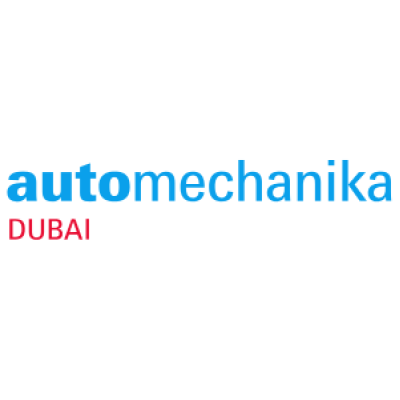


Comments (0)
ADD COMMENT